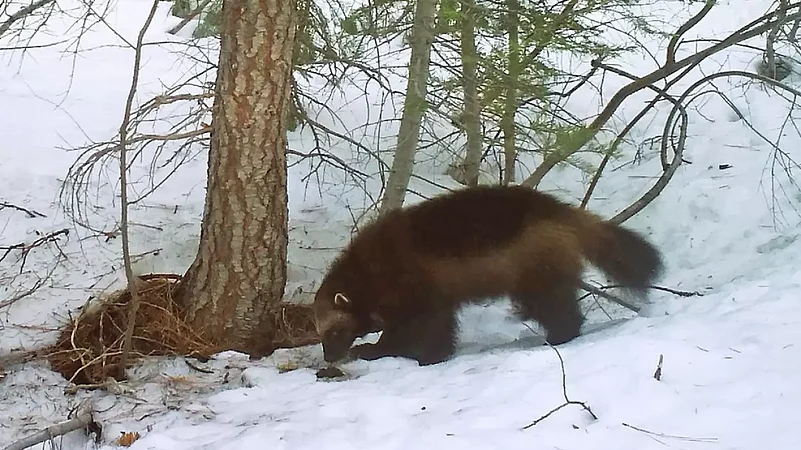The North American wolverine, an intense mountain predator with close relations to badgers and skunks, secured protection as a threatened species in the United States on Wednesday. This decision, made under a Biden administration policy, highlights the perceived risks to the wolverine's snowy habitat due to climate change.
The inclusion under the Endangered Species Act overturns a previous determination by the Trump administration in 2020, which deemed such a classification unnecessary. This reversal resulted in a federal court ruling in Montana last year, mandating the U.S. Fish and Wildlife Service to reassess the decision.
The agency under the Obama administration first proposed listing wolverines for protection in 2013.
The final rule issued by Fish and Wildlife on Wednesday classifies the reclusive animal as 'threatened' in the contiguous United States. Approximately 300 of these animals are estimated to inhabit the high country of Montana, Idaho, Wyoming, and Washington state.
This classification does not extend to Alaska or Canada, where the wolverine population is in the thousands.
Viable populations once traversed vast areas of the northern Cascades, the Rocky Mountains, and the Sierra Nevada before their numbers and range were significantly reduced due to extensive trapping and poisoning.
When listing them for protection, government biologists cautioned that the remaining isolated populations in the Rockies and Cascades were perilously close to extinction. The primary culprits were identified as rising temperatures and diminishing snowpack, factors that have progressively fragmented the mountain habitat crucial for wolverines.
Environmental groups, who initially urged the government to categorize wolverines as threatened back in 1994, celebrated the action taken on Wednesday, considering it long overdue.
"This long-awaited decision gives the wolverine a fighting chance at survival," Earthjustice attorney Timothy Preso said in a statement.
As the largest terrestrial species within the Mustelidae mammal family, the wolverine shares close kinship with weasels, ferrets, skunks, and badgers.
The wolverine, a robust and solitary carnivore with a resemblance to small bears and bushy tails, is renowned as a fierce predator. It exhibits the ability to overpower prey many times its own size and has a diverse diet that includes anything from birds to berries.
These creatures construct their dens, reproduce, and store food in high-elevation regions with deep snow. Biologists from Fish and Wildlife pointed to recent scientific findings indicating that the habitat of wolverines is likely to face growing intrusion from backcountry winter recreation and human disturbances, particularly as snow cover continues to diminish.

New research also found that large highways in southern British Columbia appear to be hindering the movement of female wolverines from Canada into the United States. This obstruction poses a threat to genetic diversity, as highlighted by the agency.
The agency suggests that controlled trapping of wolverines in southern Canada, where they are highly valued for their pelts, might have had a more detrimental impact on their populations than initially believed.
Experts suggest that wolverines, in their quest for food, can cover more than a dozen miles (19 km) a day across challenging terrain. This behavior is believed to be the primary factor influencing their movements and elucidating the vastness of their natural home range.
The Endangered Species Act typically prohibits the killing or harming of animals classified as threatened or endangered unless a special permit is obtained.
However, the listing of the wolverine includes interim exceptions for mortality resulting from "incidental trapping," research activities, or forest management aimed at mitigating wildfire risks.
As implemented, the wolverine listing provides the government with a one-year timeframe to designate critical habitat. Within this designated area, commercial activities will be restricted to promote the recovery of the animal.
Noah Greenwald, a director of the endangered species program at the Center for Biological Diversity, expressed that the ultimate listing represents an enhancement compared to the initial 2013 proposal. The original proposal had allowed for more extensive exceptions and had dismissed critical habitat protections, attributing climate change as the species' predominant threat.



























